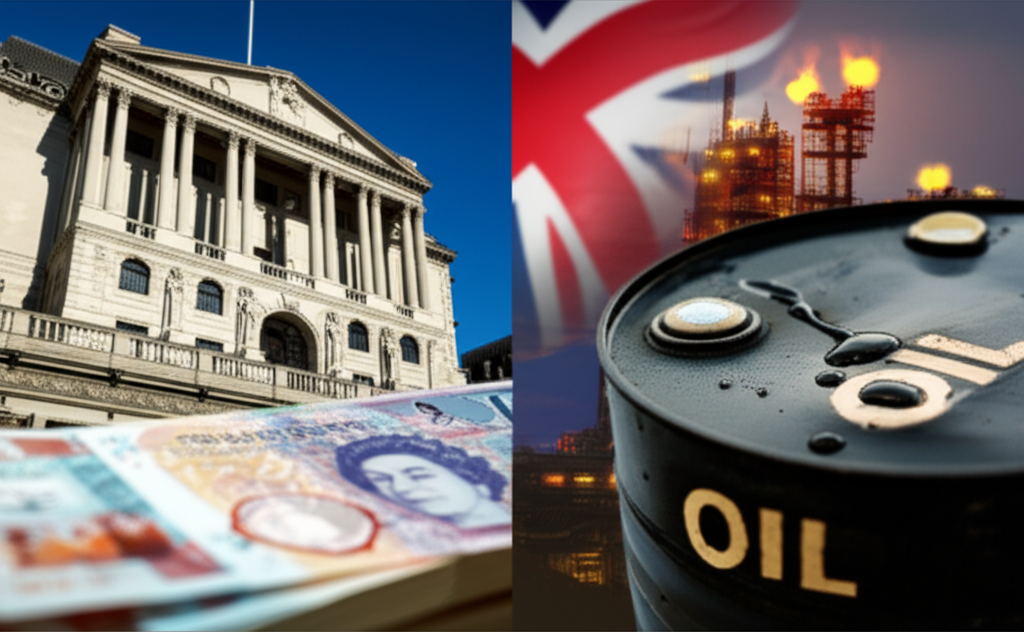GBP/USD, Crude Oil Forecast: Two Trades to Watch
In the dynamic world of global finance, identifying key market movers and understanding the underlying forces shaping them is paramount for anyone keen on navigating investment landscapes. As we delve deeper into a period marked by shifting economic paradigms, two distinct assets stand out for their potential to offer significant trading opportunities and serve as bellwethers for broader market sentiment: the GBP/USD currency pair and crude oil. Both are influenced by a complex interplay of macroeconomic indicators, geopolitical events, and central bank policies, making them compelling subjects for close observation. For young adults embarking on their financial journey, comprehending the intricacies of these assets can provide invaluable insights into global economic currents and refine their analytical prowess.
The British Pound versus the U.S. Dollar (GBP/USD), often referred to as “Cable,” represents one of the most actively traded currency pairs globally. Its movements are a sensitive barometer of the economic health and monetary policy outlooks in both the United Kingdom and the United States. Recently, the pair has been buffeted by diverging inflation trajectories and economic growth prospects. In the UK, inflation has proven stubbornly persistent, prompting the Bank of England (BoE) to maintain a hawkish stance for longer, even as growth forecasts remain subdued, flirting with recessionary fears. Conversely, the U.S. economy has shown remarkable resilience, with a robust labor market and cooling but still elevated inflation figures, leading the Federal Reserve (Fed) to carefully calibrate its monetary policy, balancing inflation control with economic stability. The differential in interest rates and market expectations for future rate hikes or cuts between the BoE and the Fed is a primary driver of GBP/USD’s direction. Should the BoE be forced to cut rates sooner than anticipated due to a weakening economy, or if the Fed maintains higher rates for longer, the Pound could face downward pressure against the Dollar. Conversely, any signs of unexpected strength in the UK economy or a more dovish tilt from the Fed could lend support to Cable. Geopolitical developments, global risk sentiment (with the USD often acting as a safe haven), and domestic political stability in either nation also significantly contribute to the pair’s volatility, making it a focal point for traders seeking to capitalize on shifting macro narratives.
Parallel to the currency markets, the global energy complex, particularly crude oil, commands constant attention due to its fundamental role in industrial activity, transportation, and inflation dynamics. Crude oil prices are a delicate balance of supply and demand, intricately linked to geopolitical stability and global economic growth. On the supply side, decisions by the Organization of the Petroleum Exporting Countries and its allies (OPEC+), non-OPEC production (notably U.S. shale output), and geopolitical flashpoints in major oil-producing regions (such as the Middle East or Eastern Europe) are critical determinants. Recent OPEC+ production cuts, aimed at stabilizing prices amid demand uncertainties, have injected volatility into the market. On the demand side, the health of major economies, particularly China’s post-pandemic recovery and the U.S. and European growth outlooks, directly impacts global oil consumption. A robust global economy typically fuels demand, pushing prices higher, while slowdowns can lead to oversupply concerns. Furthermore, strategic petroleum reserve policies, the pace of the global energy transition, and even short-term inventory reports from agencies like the EIA can cause significant price swings. The ongoing push for renewable energy, while a long-term bearish factor for fossil fuels, doesn’t diminish crude oil’s immediate significance. Any disruption to supply chains, an unexpected surge in demand from recovering sectors, or shifts in OPEC+ strategy can send ripples across global markets, influencing everything from gasoline prices to corporate earnings, underscoring why crude oil remains an essential “trade to watch” for its direct and indirect market implications.
For young investors and traders, monitoring both GBP/USD and crude oil offers a practical education in the interconnectedness of global finance. Their movements reflect the ebb and flow of central bank policies, geopolitical tensions, and economic performance across major world economies. While the prospect of identifying profitable trades is alluring, it is crucial to approach these markets with a robust understanding of the underlying fundamentals and a keen awareness of risk management. Volatility in these assets can be swift and substantial, driven by unexpected data releases or sudden geopolitical shifts. Therefore, staying informed, diversifying strategies, and understanding personal risk tolerance are not just recommendations but necessities for navigating these complex but potentially rewarding trading avenues. The ongoing evolution of monetary policies and the ever-present geopolitical backdrop ensure that GBP/USD and crude oil will remain central to market discourse and trading strategies for the foreseeable future.





